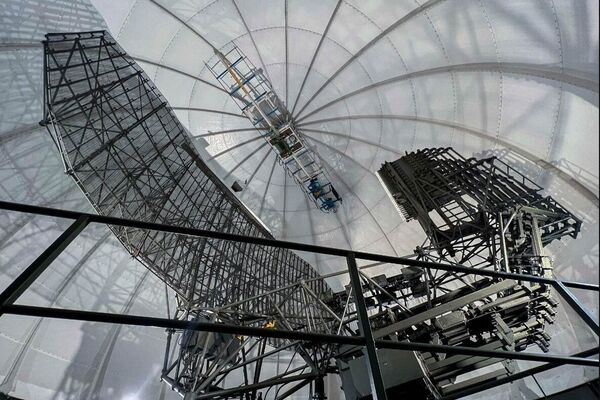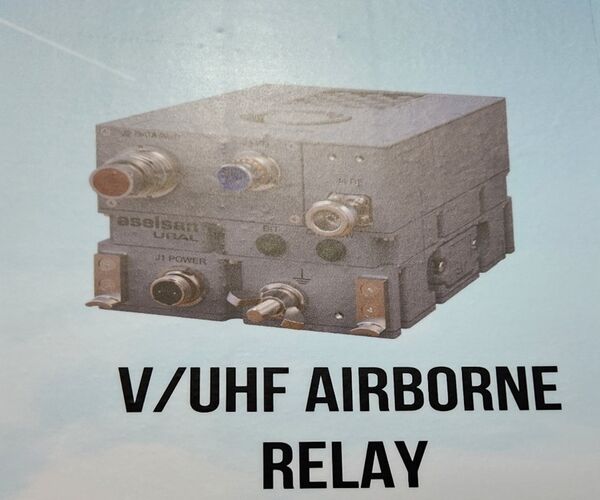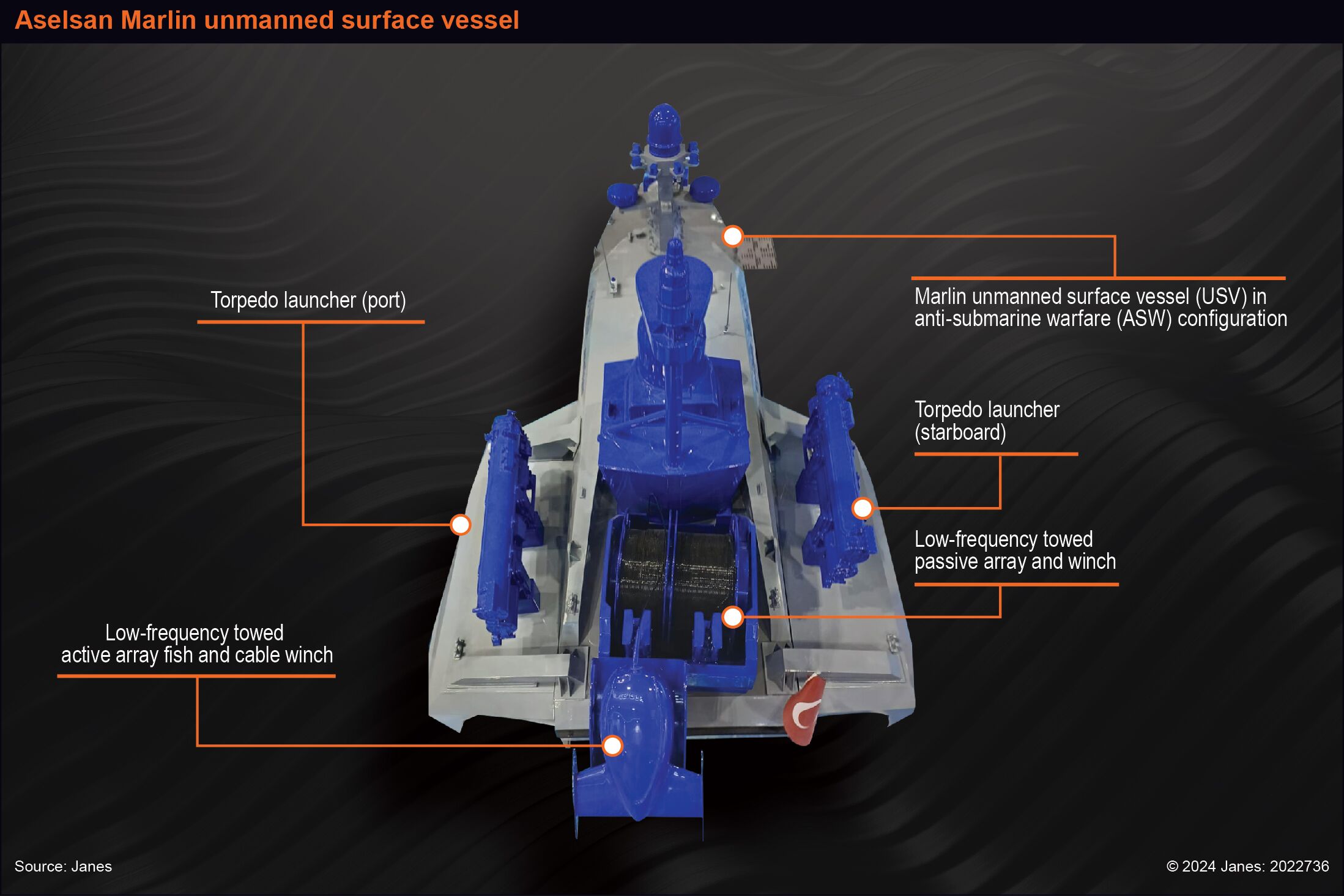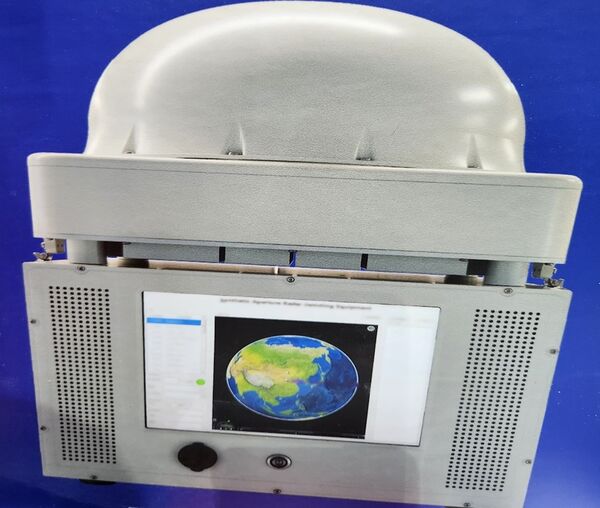- About
- Intara
- Capabilities
- Advisory
- Resources
- News
- Store
Netherlands retires 52-year-old air surveillance radar
03 April 2024
by Olivia Savage


The GM400α radar from Thales is replacing the MPR (pictured) in Nieuw Milligen while the new Herwijnen radar station is fitted with the long-range SMART-L Multi-Mission/Fixed system. (Netherlands Ministry of Defence )
The Royal Netherlands Air Force (RNLAF) has retired its 52-year-old Medium Power Radar (MPR) based in Nieuw Milligen, the Netherlands Ministry of Defence (MoD) announced on 2 April.
The MPR in Nieuw Milligen has been in service since 1971, supporting the RNLAF Nieuw Milligen air operations control station (AOCS) with air surveillance and early warning.
One of NATO's Lanza 3D Deployable Air Defence Radars (DADRs), developed by Indra, is providing basic coverage while the MPR system is replaced with the Ground Master 400 Alpha (GM400α) radar from Thales, due to be installed by the end of July.
The GM400α radar is also supposed to be a temporary replacement until the new radar station in Herwijnen is installed with the SMART-L Multi-Mission/Fixed (MM/F) radar. The MoD is unsure whether the Nieuw Milligen radar station will continue functioning once Herwijnen is operational from 2026.
DSA 2024: Aselsan unveils radio relay system
08 May 2024
by Rakend P


An image of the URAL radio relay system on display at DSA 2024. (Janes/Rakend P)
Turkish company Aselsan has unveiled its latest radio relay system at the Defence Services Asia (DSA) 2024 exhibition held in Kuala Lumpur from 6 to 9 May.
The system, known as URAL, is an airborne software-defined radio relay operating in the very/ultra-high frequency (V/UHF) band.
URAL is designed for unmanned aerial vehicles (UAVs) and other airborne platforms for surveillance, reconnaissance, and mapping applications.
It utilises Aselsan's advanced network waveform features to achieve the high throughput data rate.
The VHF and UHF bands are incorporated in a single unit to reduce the system's size and weight to meet the low size, weight, and power (SWaP) requirement of UAVs. The company told Janes that older radio relays are available in single band only, either VHF or UHF frequency.
Aselsan's representative did not disclose the modulation type, data rate, and the waveforms incorporated in the system at the time of publication. Based on Janes
DSA 2024: Aselsan showcases Marlin USV in ASW configuration
08 May 2024
by Vinod Kumar CV


An infographic of Aselsan's Marlin USV, which is on display at DSA 2024. (Janes)
Turkey's Aselsan has for the first time displayed its Marlin unmanned surface vessel (USV) in its full anti-submarine warfare (ASW) configuration.
In this configuration – on show at the Defence Services Asia (DSA) 2024 exhibition in Kuala Lumpur from 6 to 9 May – the USV is integrated with the Mini-Düfas low-frequency active towed array and passive towed sonar system. Aselsan aims to operationalise the mini version of its Düfas towed active sonar for USVs, called Düfas-M, in 2024.
Tests on hardware components are under way, with sea trials on a Marlin USV set for the second half of 2024. Düfas features both active and passive arrays and detection and tracking capabilities.
Speaking to Janes on 7 May, Suat Ekmen, Aselsan's Asia-Pacific manager, said, “The specifications including operating frequencies of the array and the towed cable length are kept confidential since the system is at the final stage of development.”
DSA 2024: Chinese manufacturer showcases aperture radar jammer
07 May 2024
by Rakend P


An image of the SAR jamming system on display at QuanLian's booth at DSA 2024. (Janes/Rakend P)
Chinese manufacturer QuanLian T&E (Hainan) International Trade Co Ltd showcased a jamming system for synthetic aperture radars (SARs) at the Defence Services Asia (DSA) 2024 exhibition held in Kuala Lumpur from 6 to 9 May.
This is the first time the system is displayed outside the home country, the manufacturer informed Janes .
The system counters SARs and reduces the probability of detection. It provides warning of SAR transmissions and jams it. The equipment is designed for protection against X-band frequencies (8–12 GHz).
It consists of an antenna module and a signal processing module and can operate in electronic support (ES) and electronic attack (EA) modes. The ES receiver of the system continuously monitors SAR signal emissions in the X-band and provides the SAR reconnaissance warning.
The ES receiver has -60 dBm sensitivity to detect SAR emissions with 360º azimuth coverages.
The EA system jams the SAR systems using a coherent suppression method. The jammer also operates in X-band frequencies with a bandwidth of 1 GHz.
Representatives of QuanLian told
The Royal Netherlands Air Force (RNLAF) has retired its 52-year-old Medium Power Radar (MPR) based i...
Latest Podcasts
Using OSINT to support law enforcement
Ritu Gill, Intelligence Analyst, joins Harry and Sean to discuss the practical use of OSINT to support law enforcement. Ritu discusses it’s use in supporting risk assessments and classified or closed sources of intelligence. She also discusses t...
Listen nowJanes Case Studies
Using Janes Intara to build a common intelligence picture: Russian build up on the Ukrainian border
View Case StudyNews Categories
 Industry Details
Industry Details